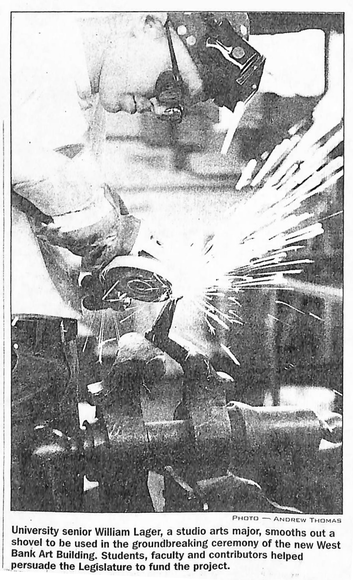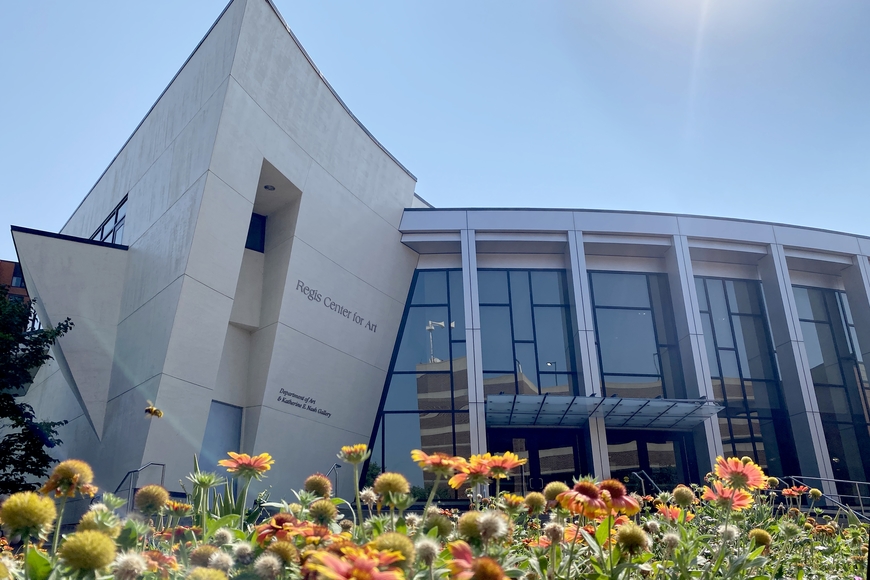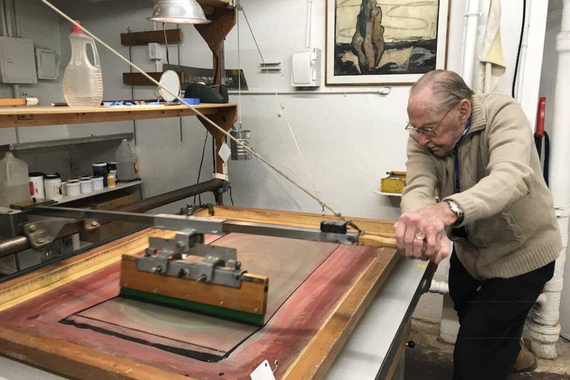Regis Center for Art Celebrates its 20th Anniversary
There was a moment, twenty-three years ago, when the Regis Center for Art almost didn’t happen. At the time, the University of Minnesota Department of Art was holding classes in a dilapidated former sign factory, which the U had bought in 1964 for a single dollar and which was home to much more than just students studying art.
“We had names for the mice,” senior Holly Gosselin told The MN Daily at the time.
The building had no proper ventilation, did not meet accessibility standards, and was overrun with birds and rodents. Alums to this day remember covering their artwork in newsprint to avoid any unwanted collaborations from above.
After nearly forty years in what was meant to be a temporary building, the Department of Art was ready for something more permanent, but a budget veto from Governor Jesse Ventura and skepticism in the State Legislature put the plans in jeopardy.
But the students weren’t going to go down that easy. According to a Pioneer Press article by Judith Yates Borger, “Students rallied in protest, flooding the legislature with petitions and phone calls to turn opinion.”
CLA Dean Steven J. Rosenstone was a particularly vocal cheerleader for the effort, and at the groundbreaking ceremony in 2000, UMN President Mark Yudof proudly recalled that “the invasion of art students (at legislative meetings) was like locusts — persistent locusts.”
The faculty also led legislators through the old building, where, according to Borger, “they ducked swooping sparrows, stepped over rodent droppings, and heard tales of raccoons and squirrels hiding out in the building.”

In the end, funding was secured. “The legislators told us they would fund the art building if we called off our students,” said Yudof. Funded with $18.5 million from the state, $15 million from the U, and another $8 million raised from private donors, ground was broken for the new facility, which was designed by Meyer, Scherer, and Rockcastle’s Garth Rockcastle, who also taught in the Department of Architecture. Rockcastle’s challenge was to create a state-of-the-art utilitarian space that visually coalesced with the other buildings in the West Bank Arts Quarter — the Rarig Center, Barbara Barker Dance Center, and the Ted Mann Concert Hall — and what emerged came to be known as the Regis Center for Art, named in honor of the single largest donor, the Regis Foundation, a philanthropic organization run by Myron and Anita Kunin.
Billed by the Star Tribune’s Mary Abbe as “brand-new and vermin-free,” the 145,000 square foot facility was completed in spring of 2003 and opened for classes the following semester. In his welcoming remarks in the opening ceremony program, Dean Rosenstone noted that “the creation of this space was a collaborative and transformative process, driven and shaped by a collective vision, a shared commitment, and an irrepressible sense of possibility.”
Professor and Department Chair at the time Mark Pharis put it even more succinctly: “We have just gone from the worst building on campus to the best.”
Now, as we celebrate twenty years in the Regis Center, we give thanks to the hard work and advocacy of all the students, faculty, staff, administrators, architects, builders, and legislators that turned that sense of possibility into a concrete reality. A special thanks should go to Mark Knierim, the Facilities Manager at the time, who helped ensure that safety and utility would be paramount in all of Regis’s technical aspects. It’s one thing to list all of the facility’s impressive metrics (though that list is long) — the number of kilns and classrooms, the square footage of each studio, all of the tools and tech that are available for use here — but what is impossible to quantify are all the artworks, ideas, careers, and friendships that have been cultivated here in Regis East and Regis West over the past two decades, let alone all of those in the years to come.
“As we look to the future, we understand that the building is not only a site for artistic exploration but also a place that fosters a welcoming culture," says Professor and current Chair Christine Baeumler, adding that, "As we move into the upcoming decades, we are also committed to improving our practices around sustainability.”
To honor the 20th anniversary, three exhibitions of artwork by faculty & staff, faculty emeriti, and current MFA & BFA students offer a brief cross-section of the artwork that defines this department and this place. As part of the 20th Anniversary Celebration on Thursday, September 28, the Department of Art is holding an opening reception for these group exhibitions, which span a variety of media and methodology, but which are unified by something singular: passion. Un-themed group shows like these are really a collection of individual obsessions, a fascinating look into the personal practice of each participating artist. The works on view in the Katherine E. Nash Gallery alone include assemblage, painting, textiles, photography, sculpture, printmaking, drawing, photography, bookmaking, ceramics, sound art, social practice, and several varieties of filmmaking — all created by 53 of the artists that make this department what it is today (and beautifully installed by the Nash Gallery team). The Anniversary event will also feature live demos, fun activities, a foundry pour, and an art supply giveaway for current students courtesy of Wet Paint Artists' Materials & Framing.
We hope that you will join us on September 28 from 5 – 8pm to help celebrate this place, these people, and the immense investment of energy and advocacy that made the Regis Center for Art possible.

Special thanks to Katelyn Morken, Research Services Archivist with University Archives; Deborah Ultan, Art & Performing Arts Librarian; and Mollierae Miller, Rare and Alternative Media Cataloger for their help in researching this piece.



